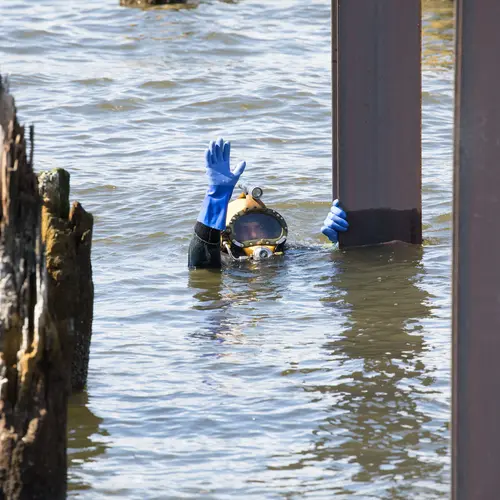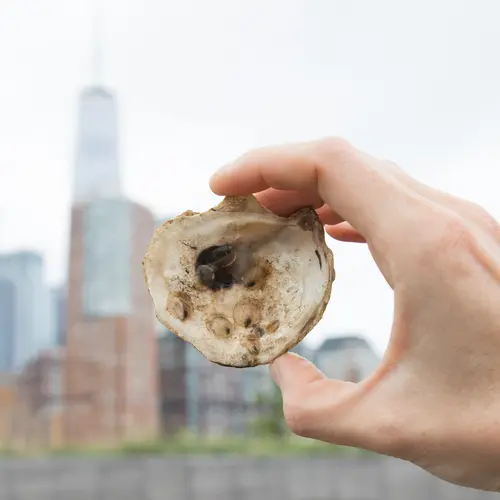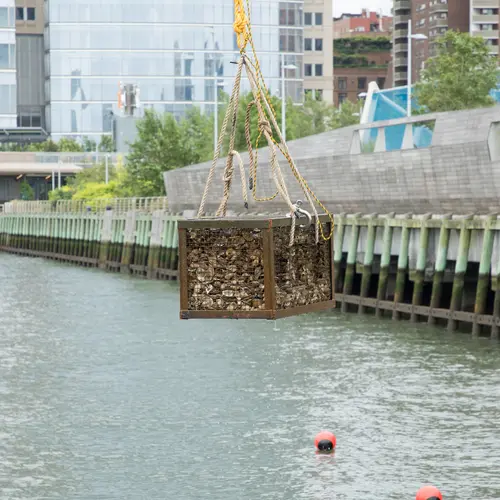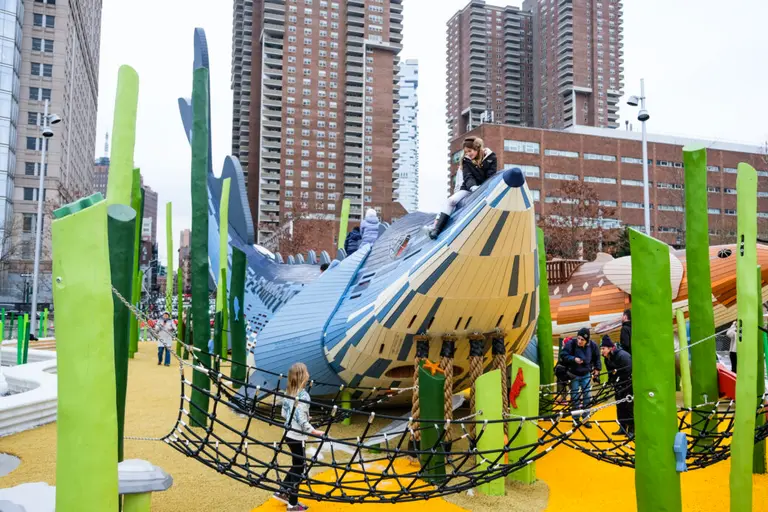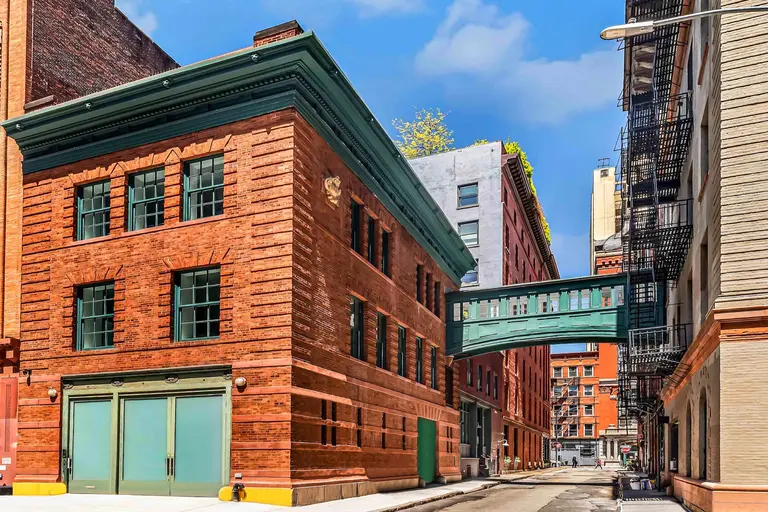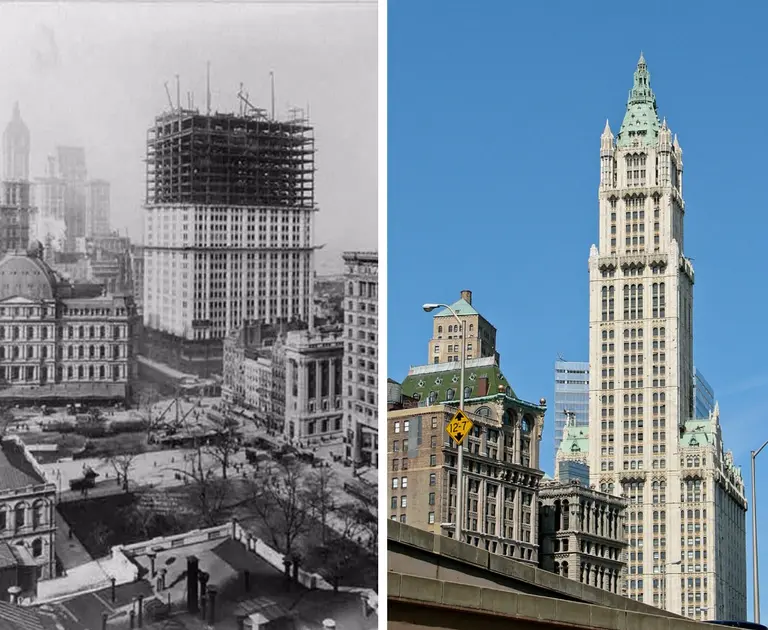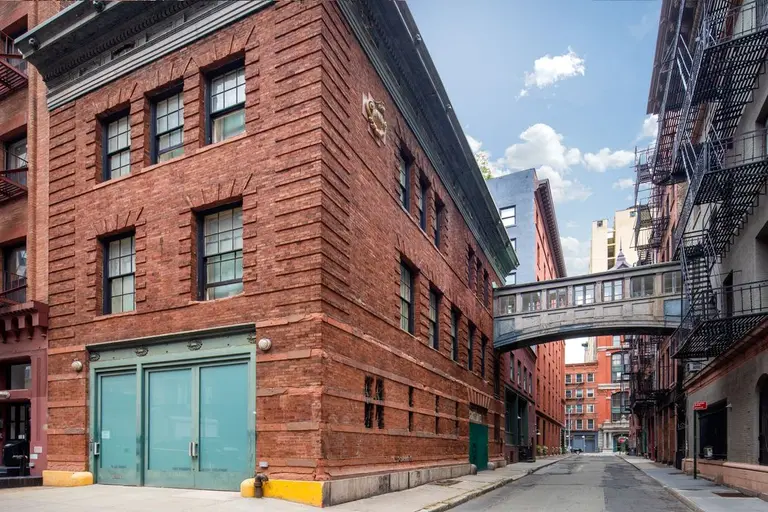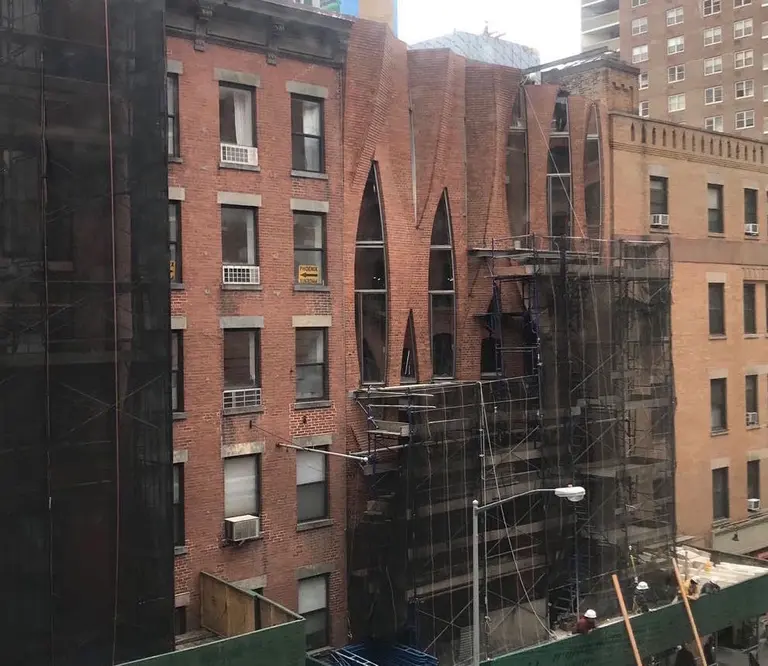Habitat enhancement project adds 11 million oysters to New York Harbor
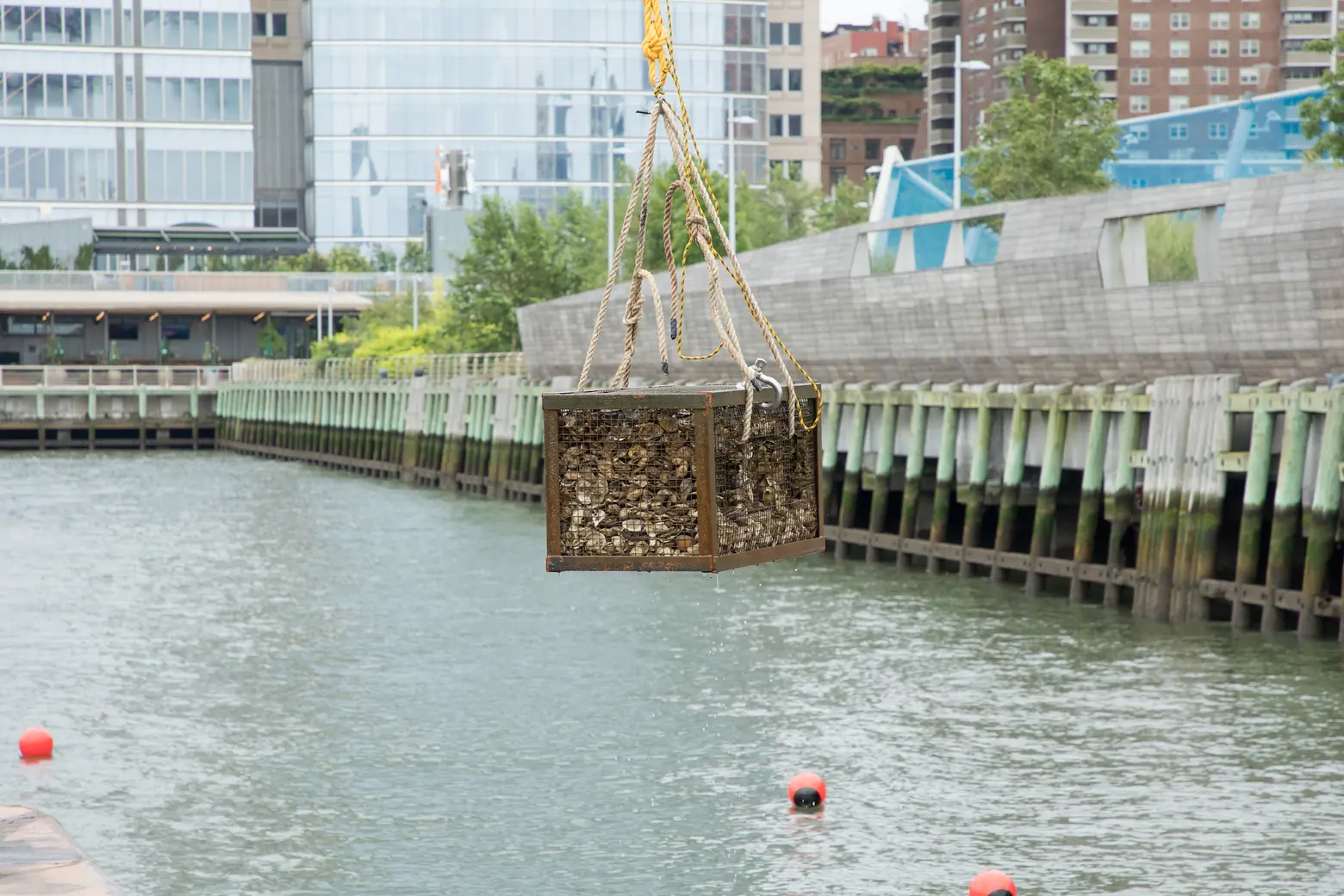
Photo credit: Max Guliani/Hudson River Park
The Tribeca Habitat Enhancement Project announced it has completed what has been the largest habitat enhancement project to date, and the first large-scale restoration initiative in Hudson River Park’s 400-acre Estuarine Sanctuary between Pier 26 and Pier 34. A key indicator of the project’s success: the installation of 11.2 million juvenile oysters to help support marine life in the Hudson River.
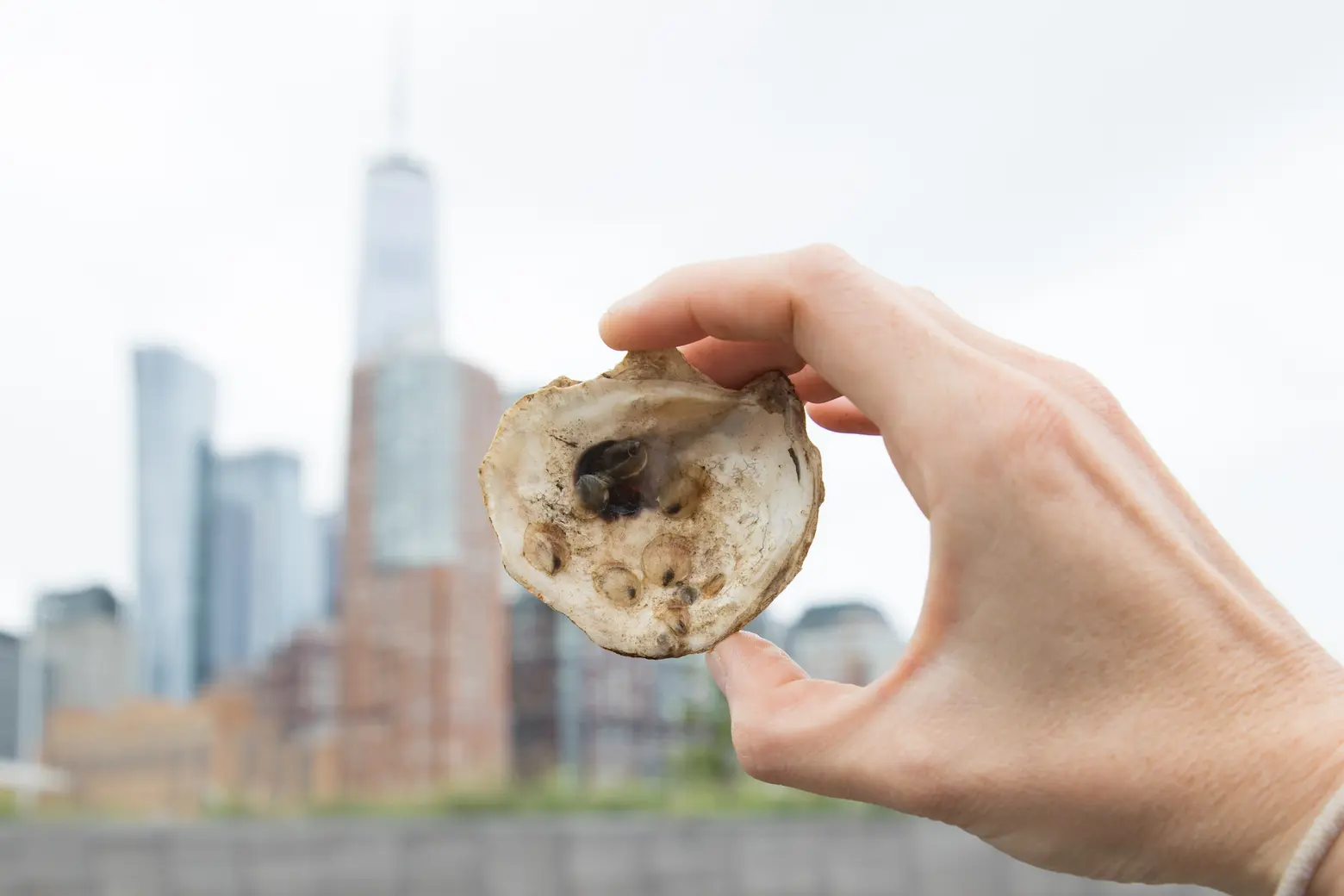
The state-funded project is among the 200+ individual subtidal habitats that the Hudson River Park Trust has built, which include reef balls, oyster gabions, pile wraps, and textured piles, all aimed at increasing the oyster population. Other environmental partners such as Billion Oyster Project, the Hudson River Foundation, and Riverkeeper have been instrumental in designing the project.
Why are oysters so important? Once installed, they form a reef-like system that adds to the diversity of the river habitat, supporting the local fish populations. The Estuarine Sanctuary is a critical habitat for over 85 species of fish, including lined seahorses, American eels, and striped bass. It is also an important migration corridor for birds and other wildlife.
Oysters also offer key environmental benefits: They’re filter feeders, so they clean pollutants from the water. And when restored at a large scale, they help control storm surge and flood impacts, making them an important part of shoreline resiliency.
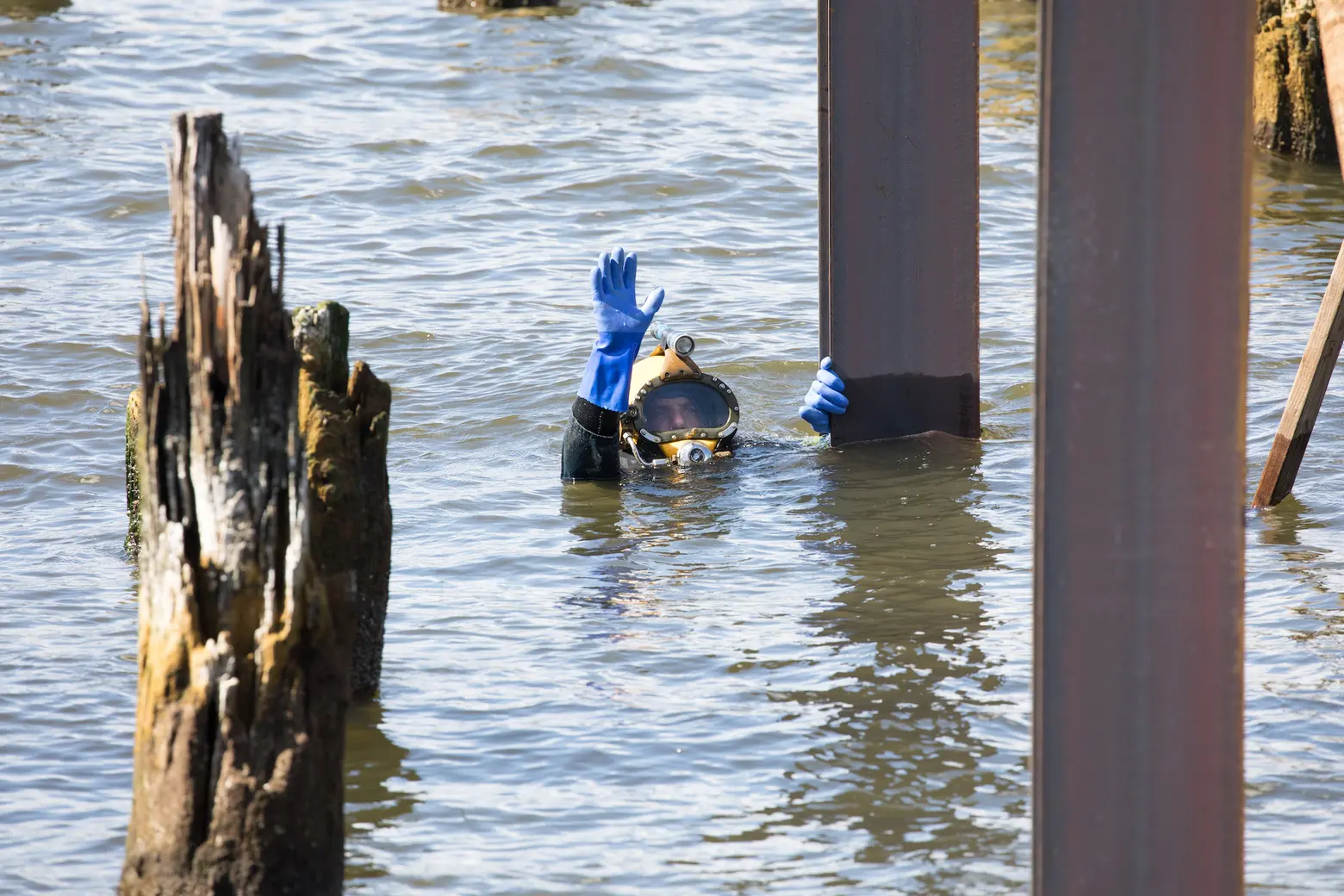 Photo credit: Hudson River Park
Photo credit: Hudson River Park
For the most recent project, installations began in July; reef balls and gabions seeded with oysters were transported in aquaculture tanks from the Billion Oyster Project. The Trust’s contractor, Reicon Group, installed them in their new underwater homes. 600 adult oysters currently in the project’s oyster wraps hail from New York’s Supporting Oyster Aquaculture and Restoration (SOAR) program, which aids oyster farmers affected by restaurant closures due to COVID.
The Park’s oyster population is contributing to the overall goal of restoring a billion oysters in the New York Harbor. The oysters in their habitat will be monitored by experts to determine how various features perform over time.
As the New York Times reports, the city was once among the world’s top oyster-exporting capitals. The tasty bivalves were sold from street carts and barges and in bars, raw or roasted, fried or pickled. But after filtering a century’s worth of pollution, the New York City oysters were no longer on the menu.
Water quality is steadily improving, though, and oysters like the ones in the Hudson River project have played a significant role in that improvement. And though it may be another century before anyone can safely eat the oysters from these waters, real progress is being made, according to Jim Lodge, senior scientist at the Hudson River Foundation.
“These exciting projects show real progress toward our shared goal to enhance the shallow water habitats of the NY/NJ Harbor Estuary,” Lodge said. “We have come to this point through an extraordinary collaboration of dedicated partners and key organizations and agencies committed to improving habitat and water quality in the Estuary and restoring the legendary New York oyster and its critical ecological functions back to the Hudson River.”
RELATED:
- Tribeca’s eco-friendly Pier 26 opens with innovative man-made tidal marsh
- Ruffle Bar and Robbins Reef: NYC’s Forgotten Oyster Islands
- Living Breakwaters: An Award-Winning Project Brings ‘Oyster-tecture’ to the Shores of Staten Island
- Shuck yeah! The Billion Oyster Project is throwing a virtual party next week
